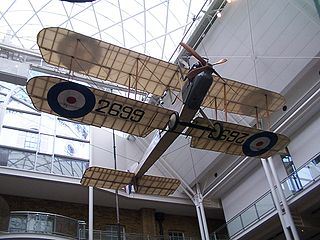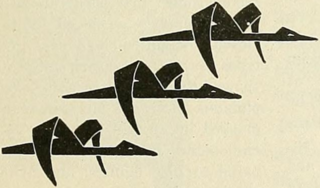
The ERCO Ercoupe is an American low-wing monoplane aircraft that was first flown in 1937. It was originally manufactured by the Engineering and Research Corporation (ERCO) shortly before World War II; several other manufacturers continued its production after the war. The final model, the Mooney M-10, first flew in 1968 and the last model year was 1970. It was designed to be the safest fixed-wing aircraft that aerospace engineering could provide at the time, and the type continues to enjoy a faithful following.

Centennial Airport is a public use airport owned by the Arapahoe County Public Airport Authority in the Denver-Aurora metropolitan area, 15 nautical miles southeast of downtown Denver, Colorado, United States. Located in Dove Valley, a census designated place in Arapahoe County, the airport's runways extend into Douglas County.
The Alexander Eaglerock was a biplane produced in the United States in the 1920s by Alexander Aircraft Company of Colorado Springs, Colorado.
Key Lime Air is a United States airline with corporate headquarters at Denver International Airport in Denver, Colorado, within the Denver metropolitan area. Established in 1997, Key Lime Air operates scheduled air service, various types of public and private charter, and United Parcel Service cargo feeder operations.

Aircraft dope is a plasticised lacquer that is applied to fabric-covered aircraft. It tightens and stiffens fabric stretched over airframes, which renders them airtight and weatherproof, increasing their durability and lifespan. The technique has been commonly applied to both full-size and flying models of aircraft.
Albert W. Mooney was a self-taught American aircraft designer and early aviation entrepreneur. He and brother Arthur Mooney founded the Mooney Aircraft Company in 1929. His first production design was the Mooney M-18 Mite. The M-18 developed into the Mooney M20 in 1955, which was produced through several iterations on-and-off from 1955 through 2019, with over 11,000 examples built.

The Mooney International Corporation is an American aircraft manufacturer based in Kerrville, Texas, United States. It manufactures single-engined piston-powered general aviation aircraft.

The Colorado Aviation Historical Society (CAHS) is located at the Wings Over the Rockies Air and Space Museum Old Lowry AFB Campus, Denver, CO and was founded in 1966. The Society acquires, restores, preserves and provides for public display, aircraft and other objects, documents, items and things of present or historical interest or value in connection with the development and history of aviation in the State of Colorado. CAHS hosts many aviation events and participates in many of Colorado's air shows and fly-ins. The Society has regular membership meetings and publishes a quarterly history journal. The Society owns an Alexander Eaglerock Model 24 Long Wings airplane which is on display at the Wings Over the Rockies Air and Space Museum. The Society also owns a Steen Skybolt aerobatic biplane which is on display at the Pueblo Weisbrod Aircraft Museum Pueblo Airport, Pueblo, CO.

The Barkley-Grow Aircraft Corporation was an American aircraft manufacturer established by Archiebald St Clair Barkley and Captain Harold Barkley Grow in Detroit in 1936 to produce a small civil transport which incorporated Barkley's patented wing design, the Barkley-Grow T8P-1.

Monocoupe Aircraft was a manufacturer of light airplanes originally produced in the late 1920s and 30s. They introduced relatively inexpensive, compact, and sporty aircraft in an era of large, maintenance intensive, open-cockpit biplanes, and the Monocoupe series was one of the first economical, closed-cabin, two-seat, light aircraft in the United States. As a result, the Monocoupe soon became a successful brand.

The Bullet Monoplane or Alexander Eaglerock Bullet was a low wing cabin monoplane that was a departure from traditional biplane aircraft of the era.
The Columbia Aircraft Corporation was an American aircraft manufacturer, which was active between 1927 and 1947.
The Alexander Film Company produced films to be shown during intermission in movie theaters.

The Swallow Airplane Swallow is an American-built general purpose biplane of the mid- to late 1920s.

Stout Metal Airplane Division of the Ford Motor Company was an American aircraft manufacturer founded by William Bushnell Stout as the Stout Metal Airplane Co. in 1922. The company was purchased by Ford Motor Company in 1924 and later produced the Ford Trimotor. At the height of the Great Depression, Ford closed the aircraft design and production division in 1936, temporarily re-entering the aviation market with the production of the B-24, at the Willow Run aircraft factory during World War II.
The Alexander Airplane Company D-1 Flyabout was an early entry into the light aircraft market by the popular biplane aircraft manufacturer. The aircraft was later manufactured by Aircraft Mechanics, Inc.
Nichols Field, also known as Alexander Airport, was an airfield 3 mi (4.8 km) north of the Colorado Springs, Colorado city between the Pikeview RR station, and the Papeton and Roswell neighborhoods.
Frank August Van Dersarl was a self-taught pilot and aircraft builder of early aviation the Colorado. Van Dersarl owned an aviation company, and taught flying; also owned the Denver Union Airport.

The Comet 7-cylinder radials were a family of air-cooled radial engines, designed and built by the Comet Engine Corporation at Madison, Wisconsin from around 1927.













